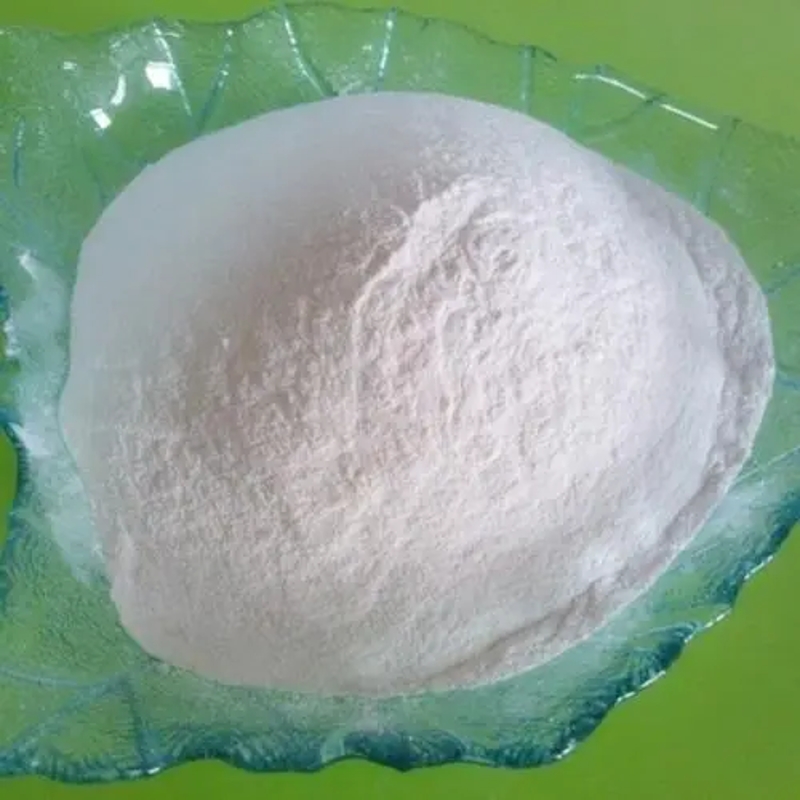-
Categories
-
Pharmaceutical Intermediates
-
Active Pharmaceutical Ingredients
-
Food Additives
- Industrial Coatings
- Agrochemicals
- Dyes and Pigments
- Surfactant
- Flavors and Fragrances
- Chemical Reagents
- Catalyst and Auxiliary
- Natural Products
- Inorganic Chemistry
-
Organic Chemistry
-
Biochemical Engineering
- Analytical Chemistry
- Cosmetic Ingredient
-
Pharmaceutical Intermediates
Promotion
ECHEMI Mall
Wholesale
Weekly Price
Exhibition
News
-
Trade Service
▎Editor of WuXi AppTec's content team When AIDS appeared in the 1980s and spread to the world, this disease with a fatality rate of more than 90% in the early stage was once equated with death
.
After entering the 1990s, with the birth and development of antiretroviral therapy (ART), AIDS began to become curable and gradually became a controllable chronic disease
.
However, once the AIDS patients stop taking the drug, the virus will rebound rapidly.
Those who need to take the drug for life face problems such as the accumulation of drug toxicity and virus mutation resistance
.
At this time, the next goal of AIDS prevention and treatment began to shift to functional cure, that is, stable virus control can be achieved even after the drug is stopped
.
After that, from the "Berlin patients" and "London patients" considered to be successfully cured AIDS patients, to the untreated and clear cure cases discovered in the last two years, the continuous emergence of these successful cases has ignited people.
Regarding the vision of a true cure for AIDS, it also reminds the scientific community that it is necessary to deeply explore the virus latent pool and immune regulation mechanism behind the realization of "stable virus control"
.
In the early hours of this morning, in a study published in the journal Cell, He Yuxian's team from the Institute of Pathogen Biology, Chinese Academy of Medical Sciences and Xue Jing's team from the Institute of Medical Laboratory Animals, Chinese Academy of Medical Sciences, screened out two with strong anti-HIV activity Inhibitors of lipopeptide virus fusion: LP-97 and LP-98, and in rhesus monkey experiments, it has been confirmed that LP-98 can effectively treat and prevent SIV (a chimeric virus of HIV and Simian Immunodeficiency Virus), partly Rhesus monkeys achieved stable virus control even after drug withdrawal
.
In the process of HIV invading cells, there is a key link: the GP41 protein of the virus mediates the fusion of the virus with the cell membrane, so that the virus can successfully invade the inside of the cell.
.
The role of membrane fusion inhibitors is to bind to GP41 and block its functional peptides or other small molecules, thereby preventing viruses from invading cells
.
In the past ten years, Professor Yuxian He's team has been looking for HIV lipopeptide virus fusion inhibitors
.
The so-called lipopeptide virus fusion inhibitor uses lipid compounds to modify the polypeptide membrane fusion inhibitor to improve the stability and antiviral activity of the polypeptide
.
In the process, the research team has screened out a series of lipopeptides with high potential
.
In the latest research, they conducted in-depth studies on two lipopeptide virus fusion inhibitors, LP-97 and LP-98
.
In the in vitro test, LP-98 showed stronger serum inhibitory activity against HIV
.
Therefore, the research team further studied the effects of LP-98 in a rhesus monkey model infected with SIV
.
▲Schematic diagram of HIV fusion protein gp41 structure and lipopeptide structure and antiviral activity (picture source: reference [1]) Experiments show that LP-98 has a long-term and stable therapeutic effect in rhesus monkeys infected with SIV.
The drug is in vivo It can be used in low doses and has a long-term effect
.
So, once the drug is stopped, can LP-98's virus-inhibiting effect continue to be maintained? The author gave LP-98 treatment to 21 rhesus monkeys infected with SIV, and then observed the virus in their bodies after the drug was stopped
.
It was found that 5 of the rhesus monkeys (about 20%) could still achieve stable virus control after drug withdrawal, which is the ideal state the research team hopes to observe
.
At the same time, the remaining 16 rhesus monkeys experienced sustained or intermittent virus rebound
.
What are the factors that cause the difference in virus suppression effects? The research team further analyzed the characteristics of the virus latent pool of these rhesus monkeys, and found that there are differences in the location of the virus latent: the rhesus monkeys that can stably control the virus after stopping the drug, their latent virus pool is hidden in the mesentery and intestine at a low level Next to the deep lymph nodes
.
In contrast, rhesus monkeys whose virus rebounded after drug withdrawal not only had a higher concentration of viral DNA, but also contained superficial lymph nodes in the neck and axilla
.
▲The distribution characteristics of the latent pool of LP-98 treatment of monkey viruses (picture source: reference [1]) The next problem that the research team has to solve is, after drug withdrawal, what mechanism does some rhesus monkeys achieve virus control (or partial control) )of? To this end, they used gene editing to inactivate the CD8+ T cells in the rhesus monkeys, and then the viral load quickly rebounded
.
By comparing the virus-specific CD8+ T cell responses of different rhesus monkeys, the research team found that rhesus monkeys that can control the virus after drug withdrawal have stronger virus-specific CD8+ T cell responses and a significant increase in multifunctional CD8+ T cell responses.
.
So far, this study has confirmed the effect of LP-98 on the treatment of SIV in the rhesus monkey model and the realization of virus control after drug withdrawal
.
Subsequent experiments also brought more surprises: LP-98 can not only be used as a treatment method, but also effectively prevent SIV or Simian Immunodeficiency Virus (SIV) infection
.
In the pre-exposure prevention experiment of LP-98, the author injected LP-98 into rhesus monkeys 2 hours, 1 week, and 2 weeks before intravenous injection of SIV
.
The results showed that the rhesus monkeys injected with LP-98 2 hours and 1 week before the injection of SIV were completely protected, while the 2 weeks group had no obvious protective effect
.
These experiments show that the effective protection period of the prophylactic medication before exposure to the drug is 1 week
.
In addition, the study also found that LP-98 can also completely block SIV attacks via rectal and vaginal routes
.
In the case of once a week of administration, rhesus monkeys exposed to SIV in the rectum and vagina for many times can completely block the infection, and no viral RNA, viral DNA and specific antibodies were detected in the body
.
▲The study revealed the latent virus reservoir and immune control mechanism (picture source: reference [1]) Therefore, the research team found that LP-98 lipopeptide can be used as an effective HIV treatment and prevention strategy, and revealed the virus latent reservoir and immunity Control mechanism
.
Professor He Yuxian said that the lipopeptide HIV fusion inhibitor in the study not only has extremely high viral inhibitory activity, but also has a long-lasting effect in the body, which is more suitable for the medication habits of people at high risk of AIDS
.
Next, Professor He Yuxian plans to make further breakthroughs in two directions: "In terms of drugs, we will continue to promote clinical trials of LP-98 drugs to verify their clinical prevention and treatment effects, hoping to bring good news to AIDS patients
.
In addition, we will in-depth study the mechanism of virus latency and drug withdrawal control, and look forward to exploring the deeper control mechanism behind it, and provide new target options for therapeutic drugs
.
"Professor He Yuxian, Institute of Pathogenic Biology, Chinese Academy of Medical Sciences and Chinese Academy of Medical Sciences Researcher Xue Jing from the Institute of Medical Laboratory Animals is the co-corresponding author of the paper
.
Researcher Xue Jing, researcher Zhong Huihui and teacher Zhu Yuanmei of the Institute of Pathogenic Biology, Chinese Academy of Medical Sciences are the co-first authors
.
The work of this project was funded by the National Infectious Disease Major Project, the Innovation Project of the Chinese Academy of Medical Sciences and the National Natural Science Foundation of China
.
Cover image source: 123RF Reference material: [1] Jing Xue et al.
, (2021) Efficient treatment and pre-exposure prophylaxis in rhesus macaques by an HIV fusion-inhibitory lipopeptide.
Cell, https:// cell/fulltext/S0092-8674(21)01382-9
.
After entering the 1990s, with the birth and development of antiretroviral therapy (ART), AIDS began to become curable and gradually became a controllable chronic disease
.
However, once the AIDS patients stop taking the drug, the virus will rebound rapidly.
Those who need to take the drug for life face problems such as the accumulation of drug toxicity and virus mutation resistance
.
At this time, the next goal of AIDS prevention and treatment began to shift to functional cure, that is, stable virus control can be achieved even after the drug is stopped
.
After that, from the "Berlin patients" and "London patients" considered to be successfully cured AIDS patients, to the untreated and clear cure cases discovered in the last two years, the continuous emergence of these successful cases has ignited people.
Regarding the vision of a true cure for AIDS, it also reminds the scientific community that it is necessary to deeply explore the virus latent pool and immune regulation mechanism behind the realization of "stable virus control"
.
In the early hours of this morning, in a study published in the journal Cell, He Yuxian's team from the Institute of Pathogen Biology, Chinese Academy of Medical Sciences and Xue Jing's team from the Institute of Medical Laboratory Animals, Chinese Academy of Medical Sciences, screened out two with strong anti-HIV activity Inhibitors of lipopeptide virus fusion: LP-97 and LP-98, and in rhesus monkey experiments, it has been confirmed that LP-98 can effectively treat and prevent SIV (a chimeric virus of HIV and Simian Immunodeficiency Virus), partly Rhesus monkeys achieved stable virus control even after drug withdrawal
.
In the process of HIV invading cells, there is a key link: the GP41 protein of the virus mediates the fusion of the virus with the cell membrane, so that the virus can successfully invade the inside of the cell.
.
The role of membrane fusion inhibitors is to bind to GP41 and block its functional peptides or other small molecules, thereby preventing viruses from invading cells
.
In the past ten years, Professor Yuxian He's team has been looking for HIV lipopeptide virus fusion inhibitors
.
The so-called lipopeptide virus fusion inhibitor uses lipid compounds to modify the polypeptide membrane fusion inhibitor to improve the stability and antiviral activity of the polypeptide
.
In the process, the research team has screened out a series of lipopeptides with high potential
.
In the latest research, they conducted in-depth studies on two lipopeptide virus fusion inhibitors, LP-97 and LP-98
.
In the in vitro test, LP-98 showed stronger serum inhibitory activity against HIV
.
Therefore, the research team further studied the effects of LP-98 in a rhesus monkey model infected with SIV
.
▲Schematic diagram of HIV fusion protein gp41 structure and lipopeptide structure and antiviral activity (picture source: reference [1]) Experiments show that LP-98 has a long-term and stable therapeutic effect in rhesus monkeys infected with SIV.
The drug is in vivo It can be used in low doses and has a long-term effect
.
So, once the drug is stopped, can LP-98's virus-inhibiting effect continue to be maintained? The author gave LP-98 treatment to 21 rhesus monkeys infected with SIV, and then observed the virus in their bodies after the drug was stopped
.
It was found that 5 of the rhesus monkeys (about 20%) could still achieve stable virus control after drug withdrawal, which is the ideal state the research team hopes to observe
.
At the same time, the remaining 16 rhesus monkeys experienced sustained or intermittent virus rebound
.
What are the factors that cause the difference in virus suppression effects? The research team further analyzed the characteristics of the virus latent pool of these rhesus monkeys, and found that there are differences in the location of the virus latent: the rhesus monkeys that can stably control the virus after stopping the drug, their latent virus pool is hidden in the mesentery and intestine at a low level Next to the deep lymph nodes
.
In contrast, rhesus monkeys whose virus rebounded after drug withdrawal not only had a higher concentration of viral DNA, but also contained superficial lymph nodes in the neck and axilla
.
▲The distribution characteristics of the latent pool of LP-98 treatment of monkey viruses (picture source: reference [1]) The next problem that the research team has to solve is, after drug withdrawal, what mechanism does some rhesus monkeys achieve virus control (or partial control) )of? To this end, they used gene editing to inactivate the CD8+ T cells in the rhesus monkeys, and then the viral load quickly rebounded
.
By comparing the virus-specific CD8+ T cell responses of different rhesus monkeys, the research team found that rhesus monkeys that can control the virus after drug withdrawal have stronger virus-specific CD8+ T cell responses and a significant increase in multifunctional CD8+ T cell responses.
.
So far, this study has confirmed the effect of LP-98 on the treatment of SIV in the rhesus monkey model and the realization of virus control after drug withdrawal
.
Subsequent experiments also brought more surprises: LP-98 can not only be used as a treatment method, but also effectively prevent SIV or Simian Immunodeficiency Virus (SIV) infection
.
In the pre-exposure prevention experiment of LP-98, the author injected LP-98 into rhesus monkeys 2 hours, 1 week, and 2 weeks before intravenous injection of SIV
.
The results showed that the rhesus monkeys injected with LP-98 2 hours and 1 week before the injection of SIV were completely protected, while the 2 weeks group had no obvious protective effect
.
These experiments show that the effective protection period of the prophylactic medication before exposure to the drug is 1 week
.
In addition, the study also found that LP-98 can also completely block SIV attacks via rectal and vaginal routes
.
In the case of once a week of administration, rhesus monkeys exposed to SIV in the rectum and vagina for many times can completely block the infection, and no viral RNA, viral DNA and specific antibodies were detected in the body
.
▲The study revealed the latent virus reservoir and immune control mechanism (picture source: reference [1]) Therefore, the research team found that LP-98 lipopeptide can be used as an effective HIV treatment and prevention strategy, and revealed the virus latent reservoir and immunity Control mechanism
.
Professor He Yuxian said that the lipopeptide HIV fusion inhibitor in the study not only has extremely high viral inhibitory activity, but also has a long-lasting effect in the body, which is more suitable for the medication habits of people at high risk of AIDS
.
Next, Professor He Yuxian plans to make further breakthroughs in two directions: "In terms of drugs, we will continue to promote clinical trials of LP-98 drugs to verify their clinical prevention and treatment effects, hoping to bring good news to AIDS patients
.
In addition, we will in-depth study the mechanism of virus latency and drug withdrawal control, and look forward to exploring the deeper control mechanism behind it, and provide new target options for therapeutic drugs
.
"Professor He Yuxian, Institute of Pathogenic Biology, Chinese Academy of Medical Sciences and Chinese Academy of Medical Sciences Researcher Xue Jing from the Institute of Medical Laboratory Animals is the co-corresponding author of the paper
.
Researcher Xue Jing, researcher Zhong Huihui and teacher Zhu Yuanmei of the Institute of Pathogenic Biology, Chinese Academy of Medical Sciences are the co-first authors
.
The work of this project was funded by the National Infectious Disease Major Project, the Innovation Project of the Chinese Academy of Medical Sciences and the National Natural Science Foundation of China
.
Cover image source: 123RF Reference material: [1] Jing Xue et al.
, (2021) Efficient treatment and pre-exposure prophylaxis in rhesus macaques by an HIV fusion-inhibitory lipopeptide.
Cell, https:// cell/fulltext/S0092-8674(21)01382-9







